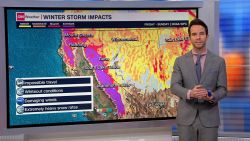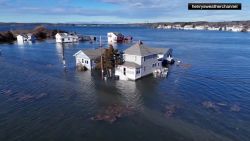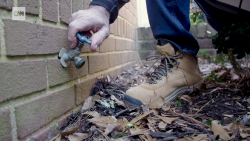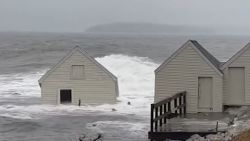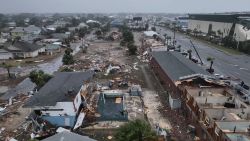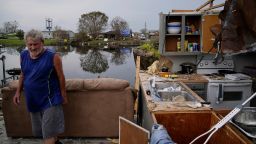Storm surge and strong winds from Hurricane Ida stopped the flow of the Mississippi River near New Orleans on Sunday and actually caused it to reverse – something the US Geological Survey says is “extremely uncommon.”
Ida made landfall near Port Fourchon, Louisiana, early Sunday afternoon as an extremely dangerous Category 4 hurricane with winds of 150 mph, the National Hurricane Center (NHC) said. The hurricane arrived on the 16th anniversary of the historically devastating Hurricane Katrina.
“I remember, off hand, that there was some flow reversal of the Mississippi River during Hurricane Katrina, but it is extremely uncommon,” Scott Perrien, a supervising hydrologist with the USGS Lower Mississippi Gulf Water Science Center in Baton Rouge, Louisiana, told CNN.
Perrien noted that the river level on Sunday rose about 7 feet due to storm surge pushing up the river at the USGS gauge, located in Belle Chasse, about 20 miles south of New Orleans in southeastern Louisiana.
“During that time, the flow of the river slowed from about 2 feet per second down to about half a foot per second in the other direction,” Perrien said.

Perrien pointed out that the gauge does not measure the flow of the entire river, so it is possible that the deeper portions of the river did not reverse flow directions.
“The river is feeling the effects of the storm over a large area,” Perrien told CNN. “All the way up to Baton Rouge the river has risen 1.5 feet in the past 12 hours as the surge pushes up the river. And the water level will likely rise more in the coming hours here in Baton Rouge.”
Ida became a Category 4 storm early Sunday morning and has tied as Louisiana’s most powerful storm ever with 2020’s Laura and the Last Island Hurricane of 1856 – all with top winds of 150 mph.
During Hurricane Laura, strong winds blew the top layer of the Mississippi River upriver away from the Gulf and slowed the river’s main current.
Hurricane Ida’s landfall comes on the anniversary of Hurricane Katrina, which hit Louisiana in 2005 as a Category 3 storm with 125 mph sustained winds. Storm surge with Katrina measured up to 24-28 feet, according to the NHC.
By comparison, Hurricane Ida is forecast to bring a lower storm surge of 12-16 feet to some areas of southeast Louisiana, the NHC says. And near New Orleans it’s expected to be even lower: 8-12 feet outside New Orleans and 5-8 feet along Lake Pontchartrain.
That’s because the wind field was larger for Katrina: 90 miles from center at landfall, compared to 50 miles for Ida.



